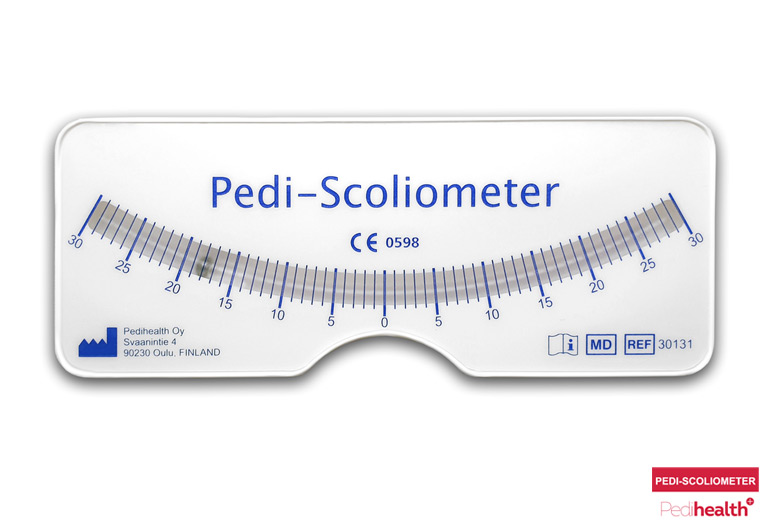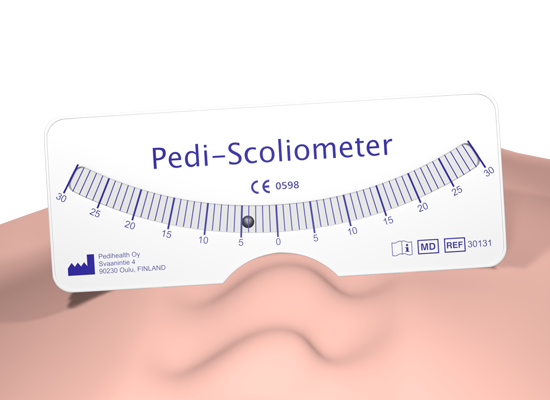Pedi-Scoliometer is an inclinometer that measures the asymmetries between the sides of the trunk by measuring axial trunk rotation (ATR) in degrees.
Pedihealth Oy has been manufacturing Pedi-Scoliometer since the 1980s. The product is manufactured in Finland.
Pedi-Scoliometer is a CE marked medical device which is intended for professional use by healthcare professionals to screening for and monitoring scoliosis.


What is scoliosis?
Scoliosis is a three-dimensional abnormality that occurs when the spine becomes rotated and curved sideways. It typically becomes noticeable between the ages of 9 and 16. The earlier scoliosis is diagnosed the better.
Most often this condition has unknown cause, in which case it is called idiopathic scoliosis. It does tend to run in families. The specific genes involved have not all been identified yet, and there could be factors beyond genetics as well. Most cases of scoliosis are mild, but some curves worsen as the child grows.

How to measure with Pedi-Scoliometer
The measurements with the Pedi-Scoliometer should be performed in forward bending position (Adam’s test) and made along the spinous processes at least at three vertebral levels: thoracic, thoracolumbar and lumbar regions. The highest of the measured readings is the most significant one. The patient should be referred for further evaluation or full spine X-ray, if the Scoliometer reading is 7 degrees or more.
The Cobb Angle value (=degree of scoliosis) can be predicted according to Scoliometer value: Predicted Cobb Angle = 4,35 x Scoliometer value – 12,6. Thus, seven degrees of the Scoliometer value predicts roughly 18 degrees Cobb Angle.

Order now!
Please contact us by email and tell us more about your needs. We’ll contact you as soon as possible.











